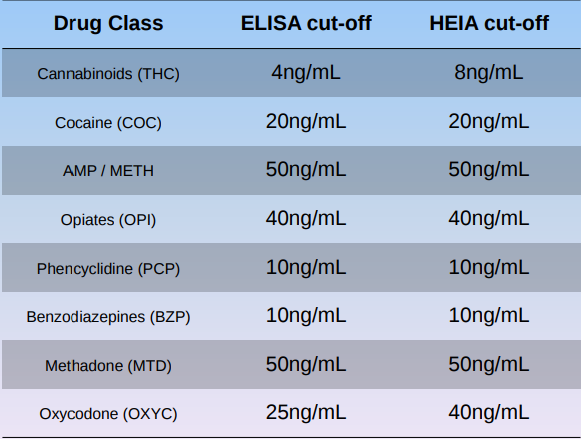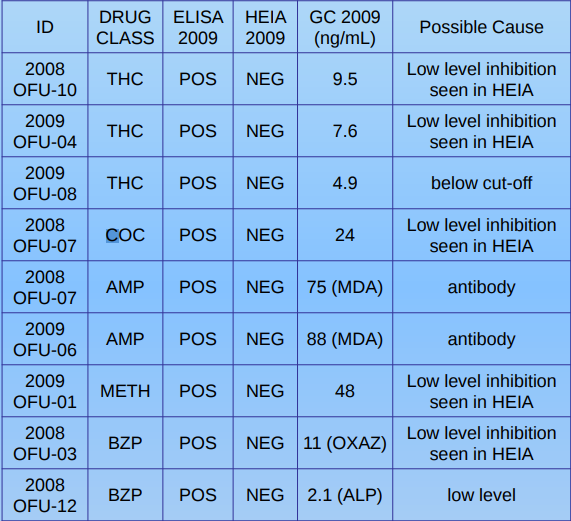Cynthia Coulter, Catherine Castro, Margaux Taruc, James Tuyay, Christine Moore
Immunalysis Corporation, Pomona, CA, U.S.A.
Abstract
* Proficiency samples are used to challenge both screening and confirmatory laboratory procedures.
* With the increased sensitivity of rapid, simple high throughput screening platforms using liquid reagents, homogeneous enzyme immunoassay (HEIA) has begun to increase in popularity as a screening choice for oral fluid, which to date has been carried out using enzyme linked immunosorbent assays (ELISA).
Objective
* To determine whether HEIA proficiency data correlates well to ELISA data over a span of 5 testing cycles.
Methods
* Neat oral fluid proficiency samples received from January 2008 to May 2009 were all reanalyzed in June 2009 by both HEIA and ELISA.
* Proficiency samples were stored at 4 C in their original amber glass containers and were not sampled again until June 2009
* All samples (N=23) and calibrators were diluted 1+3 with Quantisal® buffer to achieve concentration values recommended for their corresponding tests. Two proficiency specimens had no volume remaining.
* All samples were analyzed for the following drugs:

Results
* For OPI, PCP, MTD, and OXYC all 23 samples had 100% correlation (POS/NEG)
* METH showed a correlation of 95%; one sample screening negatively using HEIA was found to have 48ng/mL of methamphetamine, just below the cut off concentration.
* The AMP correlation was 91% with HEIA detecting two samples containing only MDA, though minor inhibition was seen in the raw data. In this case there are different antibodies used and the cross reactivity for MDA differs between the two kits by 178% for ELISA and 40% for HEIA.
* The BZP correlation was 91% with one sample containing 11 ng/mL oxazepam and the second sample containing 2.1 ng/mL alprazolam.
* The lowest correlation, as expected, was in the drug classes COC and THC (86% correlation). For THC the samples that did not agree all challenged the cut-off concentrations for both kits with three samples screening positive by ELISA and negative by HEIA.
* As with the amphetamine antibody the cocaine HEIA and ELISA antibodies do differ slightly with respect to cross-reactivity. One more was found positive by ELISA but negative with HEIA.
* In all cases where POS/NEG data did not correlate inhibition was seen in the raw data for HEIA and ELISA within +/- 20% of cut-off concentration.
Data

Summary
* The overall correlation between HEIA and ELISA using proficiency samples was 94%.
* Routine liquid reagent chemistry analyzers and ELISA platforms show a high degree of qualitative correlation.
* Discrepant results can be attributed to different cut-off concentrations, or variation in the antibodies used in the assays.
SOFT, Oklahoma City, 2009
To view the full study and its data, visit this link.
Looking for equipment or accessories for your immunoassay and other related applications? Check out our products below.